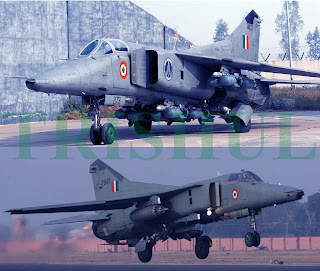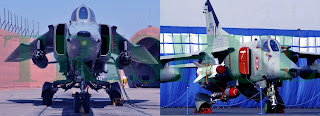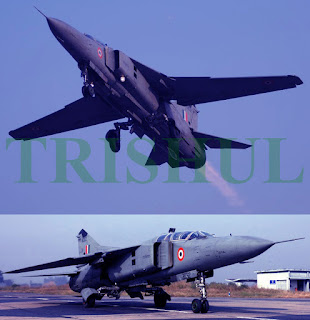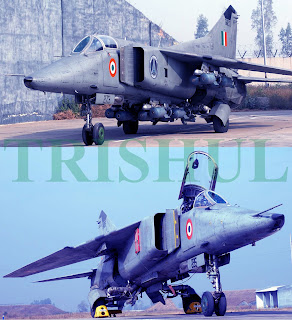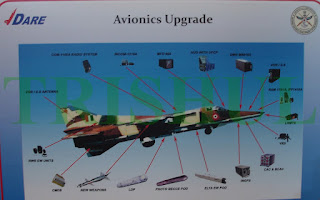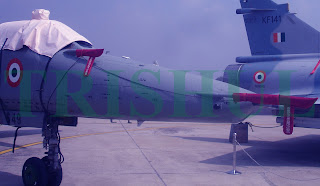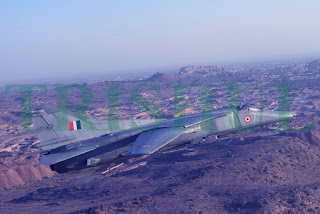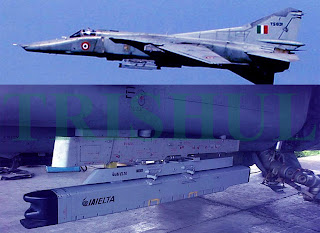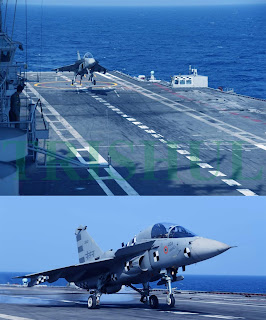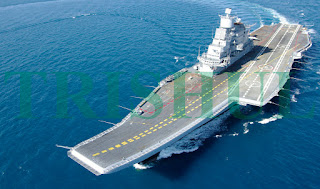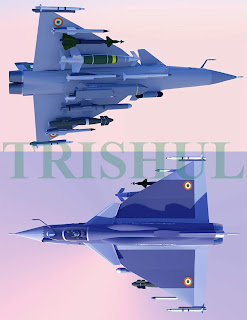The two rounds of aerial engagements between the air forces of India and Pakistan on February 26/27 after the February 14 Pulwama terror-attack hold important lessons for conventional deterrence as well as answers to the question of whether high-intensity limited war options are possible under a nuclear overhang. India has since the early 1990s accused Pakistan of playing the conflict game at the sub-conventional level, while denying India the justification to retaliate through her superior conventional capabilities by signalling the resolve to introduce nuclear weapons first and early into a conventional conflict. At the same time, after the limited conflict fought at the forbidding heights of northern Jammu & Kashmir (J & K) in mid-1999 and the subsequent 10-month long total military mobilisation (OP Parakram) starting mid-December 2001, has been conceptualising how to punish Pakistan conventionally while remaining below the nuclear threshold. Put simply, India thought that there was a bandwidth limited by time and space within which she could act militarily and punitively while making it extremely difficult for Pakistan to escalate to the nuclear-level because such an escalation would be considered highly disproportionate and would draw international opprobrium. The argument was that the certainty of international diplomatic and economic isolation would force Pakistan to stay its hand and not escalate to the nuclear-level. The banal analogy of this translates into someone punching another person in a crowded bazaar and the victim, instead of keeping himself to the fistfight, chooses to draw and fire a handgun. Not only would such a person lose the sympathy of the crowd, he would also invite the full coercive and normative weight of the law. Corollary: whoever ups the ante in a basic fight ends up as the loser.
However, while India’s military decision-makers have been thinking about this and rehearsing various related scenarios since 2004, until the arrival of the NDA-2 government led by India’s Prime Minister Narendra Modi in late May 2014, New Delhi had continued to shy away from actualising a short, sharp military option against Pakistan, focussing instead on exercising strategic restraint while exploiting diplomatic channels by using the country’s diplomatic heft. For instance, had the then NDA-1 government had by May 1998 publicly announced its intention to conduct a comprehensive strategic defence review aimed at restructuring India’s three armed services in order to address the new ground realities associated with the conduct of limited high-intensity conventional warfare under a nuclear overhang, the chances of Pakistan launching OP Koh-e-Paima against India in northern Jammu & Kashmir (J & K) would have been slim. Given the total ratio of land forces of India and Pakistan, which then was about 2.25:1.2 the Pakistan Army’s Military Operations Directorate had then concluded that the initial Indian military reaction would be to rush in more troops inside J & K, thereby further eroding the Indian Army’s offensive capabilities against Pakistan. As a consequence, the MO Directorate concluded that India would not undertake an all-out offensive against Pakistan, since by doing so she would run the risk of ending in a stalemate, which would be viewed as a victory for Pakistan. It is for this reason that the Pakistan Army had then appreciated that an all-out conventional war, let alone nuclear war, was never a possibility. The Pakistan Army’s consequent operational plan envisaged India amassing troops along the Line of Control (LoC) to deal with the threats at Kargil, Drass, Batalik, Kaksar and Turtuk, thereby resulting in a vacuum in the rear areas. By July 1999, the Pakistan-origin Mujahideen were required step up their sabotage activities in the rear areas, thereby threatening the Indian lines of communication at pre-designated targets, which would have helped isolate pre-determined pockets, forcing the Indian troops to react to them. This in turn would have created an opportunity for the Pakistani forces at Kargil, Drass, Batalik, Kaksar and Turtuk to push forward and pose an additional threat. India would, as a consequence, be forced to the negotiating table. While it is useless to speculate on whether it could in fact have succeeded, theoretically the plan for OP Koh-e-Paima was faultless, and the initial execution, tactically brilliant. But at the strategic-level the Pakistan Army was caught totally off-guard by India’s vertical escalation (by involving the Indian Army through OP Vijay, the Indian Air Force through OP Safed Sagar and the Indian Navy through OP Talwar) that lasted from April 29 till August 3, 1999.
However, what totally bemused Pakistan’s military leadership at that time was the totally defensive mindset on the part of India’s then ruling political leadership. This was subsequently articulated by none other than Lt Gen Javed Hassan—who as the then GOC Force Command Northern Areas (FCNA) had played a key role in commanding both the Pakistan Army and the then paramilitary Northern Light Infantry (NLI) forces. He had in the mid-1990s been commissioned by the Pakistan Army’s Faculty of Research & Doctrinal Studies to produce a guide to India for serving officers of the Pakistan Army. In ‘India: A Study in Profile’, published by the military-owned Services Book Club in 1990, Lt Gen Hassan had argued that the ruling Indian ‘baniya’ class is driven by “the incorrigible militarism of the Hindus.” “For those who are weak,” he had gone on, “the Hindu is exploitative and domineering.” A highly intelligent and well-read officer, he was more of an academic than a commander, and bore that reputation. He, therefore, was the best-placed with a point to prove in a subsequent military appreciation of OP Koh-e-Paima—this being that OP Koh-e-Paima had provided India with a splendid opportunity to enact its February 22, 1994 parliamentary resolution by embarking upon a prolonged high-intensity AirLand offensive across the LoC that could eventually have resulted in the capture of almost the entire district of Baltistan (inclusive of Skardu and the Deosai Plains) at a time when both the Pakistan Army and Pakistan Air Force (PAF) were clearly unable to give high-intensity battle for more than a week, since the US, by invoking the Pressler, Glenn-Symington and Solarz Amendments since October 1990 had stopped providing product-support for all US-origin military hardware in service with Pakistan’s military, and also because Pakistan was holding only 48 hours worth of military POL stockpiles at that time.
This inexplicable defensive mindset and timorous posture-cum-conduct of India’s ruling political elite was again in full display during OP Parakram, which was launched in the wake of the December 13, 2001 terrorist attack on India’s Parliament, and was the first full-scale mobilisation since the 1971 India-Pakistan war. It began on December 15, 2001 after receiving the Cabinet Committee on National Security’s (CCNS) authorisation and was completed on January 3, 2002. It finally ended on October 16, 2002 when the CCNS belatedly recognised that the law of diminishing returns had been operative for many months already. In the snow-bound areas of J & K the Indian Army had by then relatively few options to launch offensive operations across the LoC, while in the plains of Punjab and Rajasthan the climatic conditions were ideal, but the nuclear overhang became the inhabiting factor. By that time, approximately 52,000 hectares of land along the International Boundary (IB) and LoC had been mined with about 1 million landmines. Till July 2003, the Indian Army had suffered 798 fatalities due to mishaps in minefields, mishandling of ammunition and explosives, and traffic accidents, and 250 injured during mine-laying operations. The cost of sustaining OP Parakram was pegged by India’s National Security Advisory Board (NSAB) at Rs.7 crore a day. This worked out to approximately Rs.2,100 crore over 10 months and did not include the cost of mobilisation and de-induction.
Eventually, India’s Parliament was informed in October 2002 that OP Parakram had cost Rs.6,500 crore (almost US$3 billion), excluding the Rs.350 crore paid as compensation to people residing in border states where Indian troops were deployed. The Indian Army was the biggest contributor to the expenses. Figures collated by Army HQ indicated that the cost of mobilisation of 500,000 troops, including pay and allowances, field allowance for one year and transfer grant alone was Rs.700 crore. The wear-and-tear cost of equipment added up to Rs.1,300 crore, while the depletion of mines, ammunition and warlike stores was around Rs.550 crore. Transport and fuel costs together added up to Rs.850 crore. The total figure for the Army stood at Rs.3,860 crore and did not include the cost of withdrawal of troops (estimated at around Rs.500 crore) and the cost of demining 1 million mines for which new demining equipment had to be bought from Denmark. Nor did this figure include the cost of deploying (and redeploying) the Indian Navy, the IAF and the Coast Guard, which was estimated to be another Rs.1,000 crore.
The first one to voice the Indian armed forces’ intense frustration over the continued myopia of India’s then ruling elite was none other than Gen. Sundararajan ‘Paddy’ Padmanabhan, who had served as the Indian Army’s Chief of the Army Staff from September 30, 2000 till December 31, 2002. Going on-the-record on February 6, 2004 (see:http://www.hindu.com/2004/02/06/stories/2004020604461200.htm), he explicitly stated that problems with India’s then prevailing (or obsolete) military doctrine and a lack of clarity within the then Union Cabinet on its war objectives had undermined OP Parakram at the very outset. Gen. Padmanabhan argued that significant military gains could have been achieved in the first quarter of January 2002, had India’s rulers made the decision to undertake a high-intensity limited conventional war. These objectives, he said, could have included the “degradation of the enemy’s forces, and perhaps the capture of some chunks of disputed territories in J & K. They were more achievable in January, less achievable in February, and even less achievable in March. By then, the balance of forces had gradually changed.” Pakistan, the Indian Army planners had then believed, had an interest in taking the conflict towards a nuclear flash-point as soon as possible. The Indian Army on the other hand believed that the best prospects of avoiding such a situation was having forces in place that could rapidly secure limited war objectives across the LoC. “If you really want to punish someone for something very terrible he has done,” Gen Padmanabhan said, “you smash him. You destroy his weapons and capture his territory.” “War is a serious business,” he continued, “and you don’t go just like that.” Doctrinal baggage, he accepted, had thus crippled India’s early options in 2002. “You could certainly question why we are so dependent on our three Strike Corps,” he said, and “and why my Holding Corps (since renamed as Pivot Corps) formations don’t have the capability to do the same tasks from a cold start. This is something I have worked on while in office. Perhaps, in time, it will be our military doctrine.”
From India’s perspective, the most important lesson that emerged from this standoff was that political and military instruments of national power must work together in a synchronised manner. Deciding to adopt a pronounced forward and aggressive military posture to coerce/compel Pakistan was basically a political decision, and India’s armed forces, excluded from the decision loop, could not immediately adopt the posture its political masters desired. Admiral Sushil Kumar, the Indian Navy’s Chief of the Naval Staff till December 30, 2001, later opined that OP Parakram was the most punishing mistake for India’s armed forces because the government of the day then lacked any political aim or objective for deploying the Army along the IB and LoC. “There was no spelt-out aim or military objective for OP Parakram. I don’t mind admitting that OP Parakram was the most punishing mistake for the armed forces. When the Parliament attack took place, in the (CCNS) board-room it was a super-charged atmosphere. As you are aware in the CCNS board-room, the three Service Chiefs sit opposite the Union Cabinet. In the end, PM (Atal Bihari) Vajpayee turned to me and said ‘aap khush nahi lag rahe hain Admiral Sahab’ (You don’t seem to be happy). I said I beg your pardon, Sir, can you give us what is your political aim? We need to derive a military aim from it. That is the whole principle of war. What is the aim, you need an aim and military objective.” He was then told by PM Vajpayee: “Woh hum baad mein batayengey” (we will tell you later). Referring to nuclear versus conventional warfighting capabilities, Admiral Kumar explained that nuclear deterrence should not be considered as the replacement for conventional warfighting capabilities of the country. “The problem is that the nuclear mindset we have is a false sense of security. Nuclear deterrence is required but it does not replace conventional deterrence. Conventional deterrence is the real deterrence, it gives you a credible response capability,” he said.
In the armed forces, there was seething anger against the then government having achieved so little with so much. Hollow now sounded Vajpayee’s rhetoric of “aar paar ki ladhaai” and several such allusions to a decisive battle. Those with a sense of history had then asked: is 2002 to Vajpayee what the 1962 debacle with China was to Nehru? Vertical escalation, if calibrated and maintained, would not have spiralled out of control. But after the initial weeks, the strategic surprise was lost by early February 2002. Matters were imprecisely conceived, and that there was no clear political objective to the mass military mobilisation. The subsequent military deployment became a losing gamble of meaningless brinkmanship. No informed cost-benefit analysis about the contours of the available military responses was undertaken. Nor were they preceded by politico-military war-gaming. It came about suddenly, and reeked of ad hocism. In developed countries, such war-gaming is a continuous process, enabling military planners to factor in the strains the political system could come under during wartime, and ways in which it could affect the operation. Of what use then was New Delhi's bluster and sabre-rattling?
The verdict: the 2001-2002 total military mobilisation was a disaster, perhaps the biggest since 1962. Political masters of that time never issued orders to realise any tactical objective, thereby underlining that the military mobilisation was never intended to launch attacks against Pakistan. But this inactivity ultimately extracted a tremendous price. Firstly, it bolstered the assiduously-cultivated Pakistani myth that deterrence has worked for it. Secondly, India’s armed forces seriously degraded their operational reserve of combat hours. What would have happened if India was faced with a repeat requirement in three months? New orders for weapons had to be placed, with consequent lag-times in terms of delivery schedules. Thirdly, as a consequence, India would have had to open herself to new strategic vulnerabilities, thereby getting squeezed in the process. Fourthly, since all combat and support equipment, especially air-defence hardware and precision-guided munitions, have a defined storage life that is measured in terms of hours, once taken out to the field and exposed to uncontrolled environment, such hardware quickly begins to degrade and become useless for combat purposes. This applies across the board, which if kept revved up for 10 months in the desert, would have had their functional abilities impaired.
This was the beginning of India’s ‘Cold Start’ warfighting doctrine,which was vaguely explained by the then COAS of the Indian Army, Gen Nirmal Chander Vij,on April 28, 2004. According to him, the reconfigured ground combat formations at each level will be task-oriented in terms of varying composition of armour and infantry elements, with integral attack helicopters of the Army Aviation Corps and the Indian Air Force (IAF), besides battlefield air interdiction (BAI) support coming from the Air Force. Also, there was then much hype about integrated Army Aviation surveillance helicopters, plus command-and-control helicopters. As per Army HQ at that time, the future battlefields along India’s western borders would involve the use of eight permanently forward-deployed ‘integrated battle groups’, meaning Brigade-sized integrated armoured/mechanised infantry forces with varying composition of armour, field/rocket artillery, infantry and combat air-support that are available to the Army’s Pivot Corps-level formations. These ‘integrated battle groups’ would be mobilised within 48 hours and will be operating independently and will thus have the potential to disrupt or incapacitate the Pakistani leadership’s decision-making cycle. As per this school of thought, when faced with offensive thrusts in as many as eight different sectors, the Pakistan Army would be hard-pressed to determine where to concentrate its forces and which lines of advance to oppose. In addition, having eight ‘integrated battle groups’ capable of offensive action will significantly increase the challenge for Pakistani military intelligence’s limited exploration/exploitation assets to monitor the status of all the tactical battle areas, thereby improving the chance of achieving surprise. Furthermore, in a limited war, India’s overall politico-military goals would be less predictable than in a total war, where the intent would almost certainly be to destroy Pakistan as a functional state. As a result, Pakistan’s defensive ripostes against Indian attacks would be more difficult because the military objectives would be less obvious. Lastly, if Pakistan were to use nuclear weapons against the advancing Indian ‘integrated battle groups’, such dispersed formations operating over narrow frontages would present a significantly smaller target than would Corps-level formations.
In reality, the Indian Army’s declared cold-starting of the forward-deployed ‘integrated battle groups’ WRONGLY PRESUPPOSES that in the next round of military hostilities with Pakistan, the politico-military objectives will be clearly spelt out far in advance. And there was no credible evidence on the ground about this being the case either during the dastardly 26/11 Mumbai terror-strikes, of after any subsequent Pakistan-origin terror-attacks inside India since then. Any military offensive strategy hinging on high-intensity limited war can only be successful if India’s political leadership at the given time of operational execution of this strategy has: the political will to use offensive military power; the political will to use pre-emptive military strategies; the political sagacity to view strategic military objectives with clarity; the political determination to pursue military operations to their ultimate conclusion without succumbing to external pressures; the political determination to cross nuclear thresholds if Pakistan seems so inclined’ and the determination to not shy away from enunciating India’snational interests from which flows all military planning. If any of the above are missing, as they have been from 1947 to till now, the Indian Army’s ‘Cold Start’ doctrine will not add up to anything. Interestingly, while India for long denied that such a doctrine existed—despite conducting several field exercises at the Divisional-/Corps-levels to validate it—the present-day COAS of the Indian Army, Gen Bipin Rawat, acknowledged its existence barely three weeks after taking office on December 31, 2016. The ‘Cold Start’ doctrine assumes that:
1)There is a time-/space-limited bandwidth within which India can exercise her conventional military options;
2) That bandwidth can be further exploited diplomatically;
3)India has the conventional superiority to make it work;
4) If India does so in response to an attack she can pin on Pakistan through undeniable corroborative evidence, she then has enough diplomatic leverage to exercise in order to have the world opinion on her side for a limited but high-intensity military campaign;
5)India can make it work through a military surprise which can achieve the desired military objectives;
6)Pakistan, having suffered a setback, will be hard-pressed to retaliate because it will have to climb up the escalation ladder—a costly proposition both for reasons of the earlier military setback as well as international diplomatic pressure;
7) Given India’s upper hand, both militarily and diplomatically, Pakistan will choose to not escalate;
8) If, however, Pakistan did choose to escalate, India will still enjoy escalation dominance because of her superior capabilities and because she will have international diplomatic support; and
9) India, given her diplomatic and military heft, will be able to raise the costs for Pakistan in an escalation spiral.
The end-result: Pakistan will weigh the consequences as a rational-choice actor and prefer to climb down.
The interesting assumption in all of the above, and one that should not be missed, is this: the first-round result. Every subsequent assumption flows from what India could achieve militarily in the opening round. Somehow, most of the available literature to date on this subject has taken for granted that the first round would obviously go in favour of India. And therefore, Pakistan’s costs for retaliation would increase both militarily and diplomatically. In fact, this does make sense if it can be guaranteed that India’s gambit will work. Except, the opening round success could be guaranteed only if India were applying force on an inanimate object or if her conventional war-waging capabilities and capacities were far superior to those of Pakistan. The second crucial point in assessing these assumptions is the limited nature of the engagement. It should be noted that India’s politico-military strategy post-OP Parakram has looked at any punitive military action in a limited, not full-scale, mode: military action below the nuclear threshold. Pakistan, on the other hand, has never drawn clear red-lines, thereby choosing instead to managing risks through ambiguity. The only time a former—and longest-serving—Director-General of the Strategic Plans Division of Pakistan’s National Nuclear Command Authority, Lt Gen Khalid Kidwai, enunciated four parameters for resorting to nuclear weapons of mass destruction (WMD) was during an interview to two visiting Italian physicists:
1)India attacks Pakistan and conquers a large part of its territory (geographic/territorial threshold);
2)India destroys a large part of Pakistan’s military forces/assets (military threshold);
3)India strangulates Pakistan economically (economic threshold);
4)India destabilises Pakistan politically or through internal subversion (domestic political threshold).
Lt Gen Kidwai was thus using hypothetical scenarios, and his four thresholds were not red-lines defined and understood by the adversary or other parties, because clearly defined red-lines dilute deterrence and provide room for conventional force-manoeuvring. The point about the limited nature of India’s military plans is important because, while a case can be made for India possibly overwhelming Pakistan in a limited AirLand military campaign—if there is not a huge differential in war-waging capabilities/capacities—may not necessarily play to the stronger adversary’s advantage. In other words, if the presumably weaker side denies the stronger side success in the opening round and draws its own blood successfully while showing restraint, it can raise the costs for the militarily stronger side by up-ending the latter’s assumptions based on the success of the opening round.
And this is exactly what transpired on February 27, which has been been explained by Pakistan as: deterrence was upheld because the initiator of military kinetic operations (India) had to factor in the nuclear dimension and keep her military options (that were thus labelled as ‘non-military, pre-emptive, counter-terror strikes) below that threshold. The defender (Pakistan), having defended successfully and then drawn blood, opted to show restraint. Third parties (like the US, China, the UK, Saudi Arabia and the UAE) got involved in no time knowing and realising that any attempt by one or both sides at escalation dominance could spiral.It can have both the conventional and the nuclear dimensions. Essentially, deterrence is the ability to discourage an actor from undertaking an unwanted action, including an armed attack. It is, in other words, about forestalling/prevention, i.e. convincingly stopping an actor from an action. The sister concept, known as compellence, is about forcing an actor to do something in line with what the compeller (adversary) wants it to do. By India’s reasoning, her limited military options are about deterring Pakistan to undertake actions at the sub-conventional level and to deter India from making use of her conventional strength because of the existence of nuclear WMDs. This is where the problem begins.
Deterrence is not just about threatening an adversary with punitive action. In order for it to be successful, it must also shape the adversary’s perceptions, i.e., force the adversary to change its behaviour by estimating that it has options other than aggression and which are more cost-effective. Shaping perceptions of the adversary that needs to be deterred would then require the deterrer to understand the motives of the actor who has to be deterred. Without that exercise, any limited action, even if it were temporarily successful, would fail to induce a behaviour change or incentivise a state actor to do something different. Also, deterrence by denial—the ability to deter an action by making it infeasible—is a far better strategy than deterrence by punishment which, as the term implies, promises the resolve and the capability to take punitive action(s) and inflict severe punishment. So, in the case of the February 27 IAF/PAF aerial engagements, deterrence for Pakistan has been perceived to have worked at two levels: First, the overall, umbrella deterrence that flows from the possession of nuclear WMDs on both sides. This level ensures that even if one or the other side decides to initiate military hostilities, it must keep it limited. The second level is about conventional deterrence. If India has undertaken a military action, Pakistan can prevent her from achieving her objective, and by successfully undertaking its own action, can force India to rethink her use of any military option. The rethink is important because, in such a play, if Pakistan has prevented India’s action and successfully undertaken its own, India cannot simply retaliate to a reprisal. India will have to climb up the escalation ladder, i.e., she has to scale-up by using an escalatory option to defend her commitment to moral/military ascendancy. Escalation is about a higher cost and the rethink is a function of forcing India into that cost-benefit analysis. It is precisely for this reason that the opening round is so crucial for the initiator of kinetic operations, in this case India.
To recap, as noted above in the list of assumptions, every subsequent assumption flows from the success of the opening round. At this point it would be instructive to view all this from the perspective of the NDA-2 government, which is of the view that the previous Indian governments did not make use of available conventional military options because they were myopic and indecisive. After all, from India’s unilateral undertaking of “no first use” of nuclear WMDs to declarations that “war is not an option” after 26/11, India seemed to have conveyed an unintentional guarantee of immunity to those contemplating inimical actions against her. In sharp contrast, the NDA-2 government had resolved from the outset to teach Pakistan a lesson and create a “new normal”. On the morning of September 29, 2016, the Indian Army’s Director-General Military Operations announced to a packed press conference that India had conducted ‘low-intensity, counter-terror shallow cross-LoC raids’ against terrorist launch pads along the LoC. Target-1 was at Dudhnial, Neelum Valley (34 42 09.97 N, 74 06 28.75 E), target-2 was at Mundakal, Leepa Bulge (34 17 21.1 N, 73 55 25.7 E), target-3 was at Athmuqam, Keran Sector (34 34 48.65 N, 73 57 01.09 E), while targets 4, 5 and 6 along India’s Rajouri sector/Pakistan’s Battal sector were diversionary in nature. Pakistan did not retaliate because India did not admit to crossing the LoC into Pakistan-occupied-Kashmir (PoK). But by hyping these raids, the NDA-2 government locked itself further into a commitment trap. On February 14, therefore, when a suicide-bomber mounted the deadliest attack at Pulwama, J & K, against Central Reserve Police Force personnel in recent times, the NDA-2 government was left with no option but to exercise a limited military option. Only this time it had to be more than just a fire-raid across the LoC. Delhi jumped a few rungs on the escalation ladder by deciding to use the IAF. The important and crucial point was that India had challenged Pakistan and the latter needed to put an end to the “new normal” talk. Pakistan chose its targets (all lying within southern J & K) and struck with alacrity to demonstrate resolve and capability.
At the same time, in order to conserve its force-capacities and discourage India from climbing the escalation ladder, Islamabad internationalised the conflict by claiming on February 27 that since India was preparing to launch long-range cruise missiles (land-launched BrahMos-1s) for hitting nine targets inside Pakistan, the latter too had readied its cruise missiles for counter-strikes and had informed India that it will retaliate against any further kinetic actions initiated by the former. That, as per claims made by Pakistani Prime Minister Imran Ahmed Khan Niazi, forced India to back off due to increasing international pressure. Of course, there is no way of knowing now whether this is true or false. Thus, the two sides are back to the ‘old normal’, i.e. cross-LoC fire-assaults. However, Pakistan must not underestimate India based on these limited aerial engagements. While India cannot not coerce Pakistan militarily at this moment, if the growth differential between the two countries continues to grow, the technological asymmetry will increase to the point where India’s strategies of coercion would kick into play, which could well spawn very different results on the ground. For instance, after the IAF starts inducting its anti-access, area-denial S-400 LR-SAMs into service by next year, such weapons will be used not just for defensive missions, but also in support of for pre-emptive offensive air operations undertaken by mixed formations of the IAF’s Su-30MKI H-MRCAs and Rafale M-MRCAs. Typically, anti-access, area-denial systems ensure that they can deny a mission to incoming hostiles (anti-access) and ensure safety of their own area against any hostile action (area denial mode). And that would be an entirely different ballgame altogether.
But as of now, a robust and sustained punitive Indian response to cross-border terrorism still remains a distant dream, since India has only so far demonstrated her professional competence and the will to go deep inside and strike at targets located in a country with a horizontal width of only 427.52km. Enhancement of mission-optimised force-capacities, on the other hand, are sorely lacking. In addition, at the strategic-level, India needs to urgently revise and introduce a degree of ambiguity in her nuclear weapons employment doctrine. At the operational-level, India must convey clarity and resolve by openly declaring: a “no negotiations” policy vis-a-vis terrorists and hijackers; her right to respond in self-defence to cross-border terrorist attacks at their sources and three, that while the response may not be instant it will be certain. In order to implement this policy, quick-reaction conventional and sub-conventional military forces-on-hand with suitable capabilities should be earmarked and kept in the requisite state of readiness at all times.






















































































































































































































































































